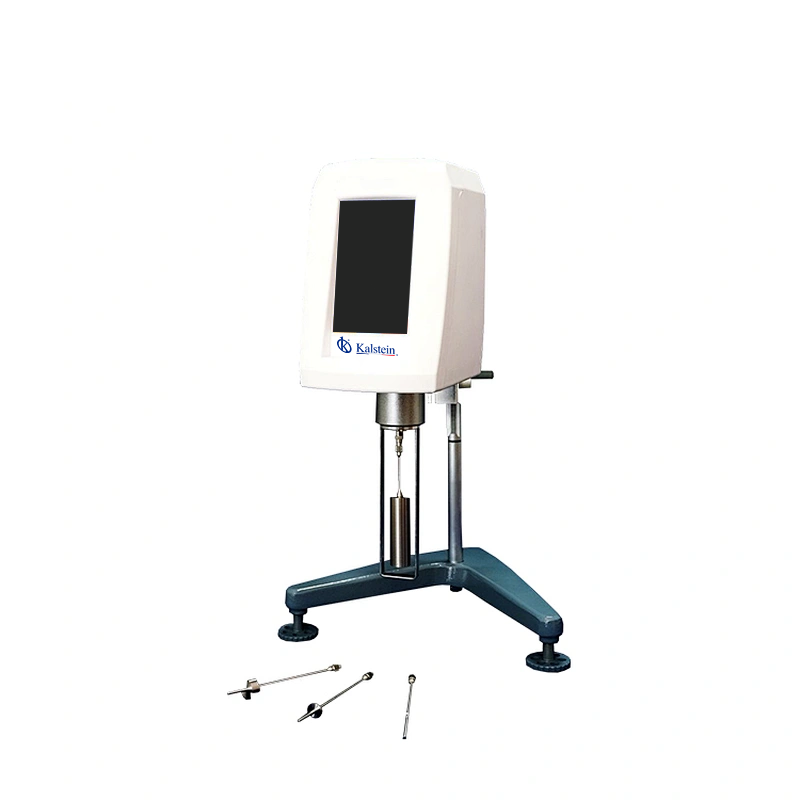In the realm of laboratory instruments, viscometers play a crucial role, ensuring precise viscosity measurements. Today, we delve into two prominent models: the Viscosity Measuring Analyzer Laboratory Viscometer YR05855 – YR05856 from Kalstein and the Rotational Viscometer NDJ-5S from RIGOL. These instruments, while serving similar purposes, have unique features that merit a detailed comparison.
The Kalstein Viscosity Measuring Analyzer is renowned for its cutting-edge technology and robust design, suitable for various laboratory applications. It is equipped with a digital display, providing accurate viscosity readings with ease. On the other hand, the RIGOL NDJ-5S Rotational Viscometer is a reliable device, designed to deliver satisfactory performance with its straightforward rotational mechanism.
| Feature | Kalstein YR05855 – YR05856 | RIGOL NDJ-5S |
|---|---|---|
| Measurement Range | 1 mPa·s to 2,000,000 mPa·s | 1 to 100,000 mPa·s |
| Display | Digital | Anaog |
| Accuracy | ±1% of range | ±2% of range |
| Spindle Rotation Speed | 0.3-60 rpm | 6-60 rpm |
| Temperature Measurement | Yes | No |
How They Work
The Viscosity Measuring Analyzer from Kalstein operates by utilizing a digital mechanism that ensures precision and ease of use. It measures the resistance of a fluid to gradual deformation by shear stress. This is achieved through its wide range of spindle speeds, which allows for comprehensive analysis across various viscosities.
The RIGOL NDJ-5S employs a rotational method where the spindle rotates in the sample fluid, and the resistance encountered provides the viscosity reading. Although effective, it is more suited to less complex applications due to its limited measurement range and lack of digital enhancements.
What It Is Used For
The Kalstein Viscosity Measuring Analyzer is essential in quality control and R&D laboratories. Its high precision and broad measurement capabilities make it ideal for industries such as food, pharmaceuticals, cosmetics, and chemicals, where accurate viscosity readings are crucial for product consistency and development.
Types
Viscometers are broadly categorized into several types based on their working principles, including capillary, rotational, and vibrating viscometers. The Kalstein model falls into the digital rotational category, offering enhanced capabilities and user-friendly operation compared to traditional models.
Market Price
In the current market, the price of viscometers can range from a few hundred to several thousand dollars, depending on the features offered. The Kalstein Viscosity Measuring Analyzer is positioned as a premium product, priced competitively to offer exceptional value, considering its advanced technological features and digital interface.
Frequently Asked Questions
What is the maximum viscosity the Kalstein viscometer can measure?
The Kalstein analyzer can measure viscosities up to 2,000,000 mPa·s, catering to an extensive range of applications.
Does the Kalstein model have temperature measurement capabilities?
Yes, it includes built-in temperature measuring functionality, beneficial for precise viscosity readings under varying thermal conditions.
What is the main advantage of using a digital viscometer?
Digital viscometers like the Kalstein model provide enhanced accuracy, ease of use, and the ability to store and analyze data conveniently.
Advantages and Disadvantages
Kalstein YR05855 – YR05856 Advantages: It boasts a broader viscosity measurement range, digital precision, integrated temperature functionality, and superior accuracy. These features enhance its versatility and application scope, providing excellent value for laboratories with extensive demands.
RIGOL NDJ-5S Advantages: This model offers fundamental viscosity measurement capabilities, suitable for applications where digital features are not essential.
Disadvantages: The RIGOL Viscometer’s primary limitation is its lower viscosity range and lack of technological enhancements, which may restrict its use in advanced laboratory settings.
Field Use of the Product
The Kalstein Viscosity Measuring Analyzer is employed in diverse fields, from industrial manufacturing to research institutions. Its application in monitoring and adjusting the viscosity of products ensures quality control and compliance with industry standards. Its digital interface simplifies data collection and interpretation, facilitating accurate and efficient viscosity analysis.
Recommendations
When using the Kalstein viscometer, regular calibration is recommended to maintain measurement accuracy. It is also advisable to follow the manufacturer’s guidelines for cleaning and maintenance to extend the device’s lifespan and ensure consistent performance. For further assistance and inquiries about purchasing this top-tier product, consider leveraging the Kalstein Plus platform to obtain automatic quotes that meet your specifications.
If you are looking for a fusion of innovation and quality, you have come to the right place. At Kalstein, we offer you the luxury of exploring our exclusive catalog of laboratory equipment. We manufacture each device with a high level of excellence. Our intuitive and agile online purchasing channels are designed for your convenience, ensuring the friendliest prices. Do not delay; we bring science to life, and it’s time to be part of our community. https://kalstein.net/en/product/viscosity-measuring-analyzer-laboratory-viscometer/.


